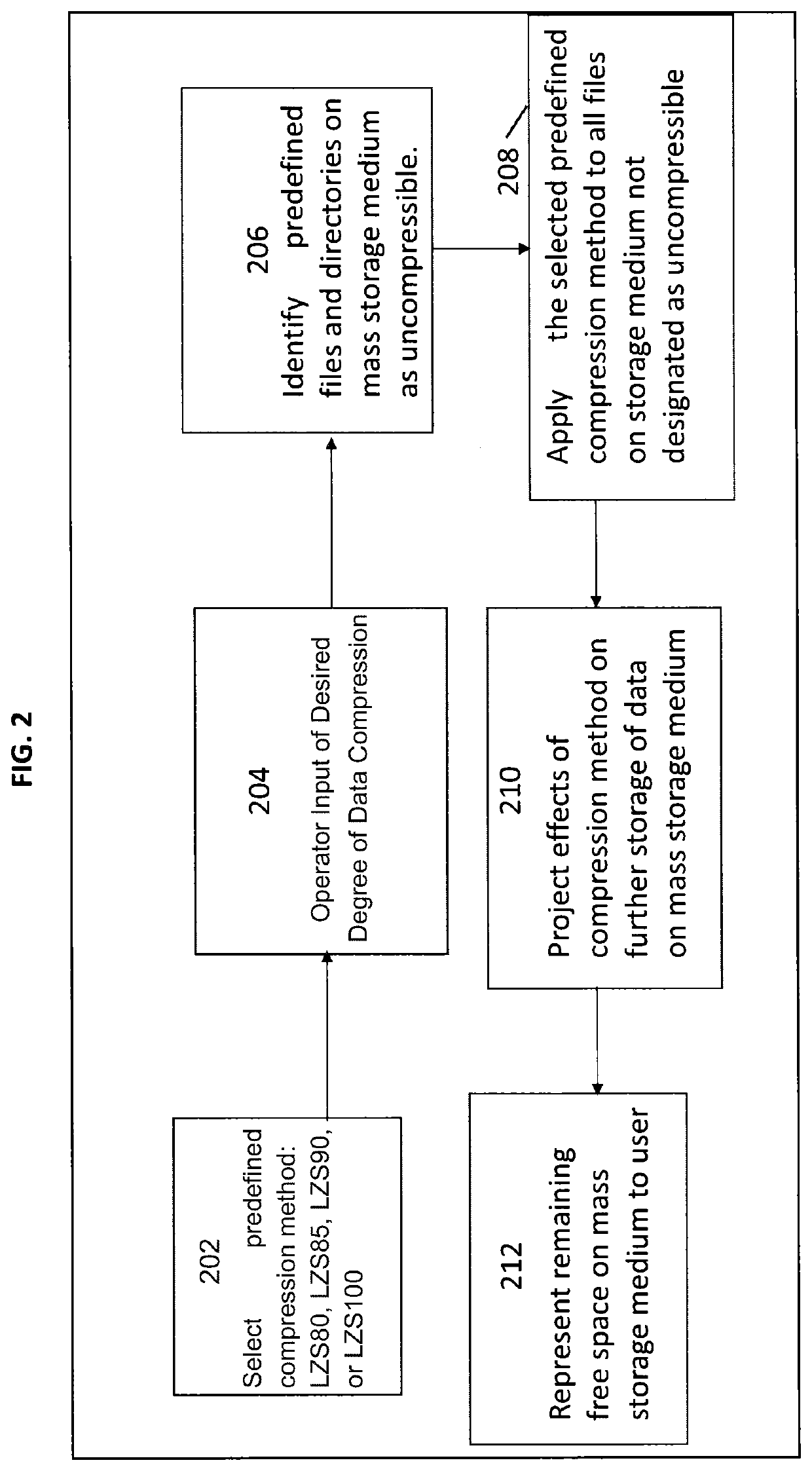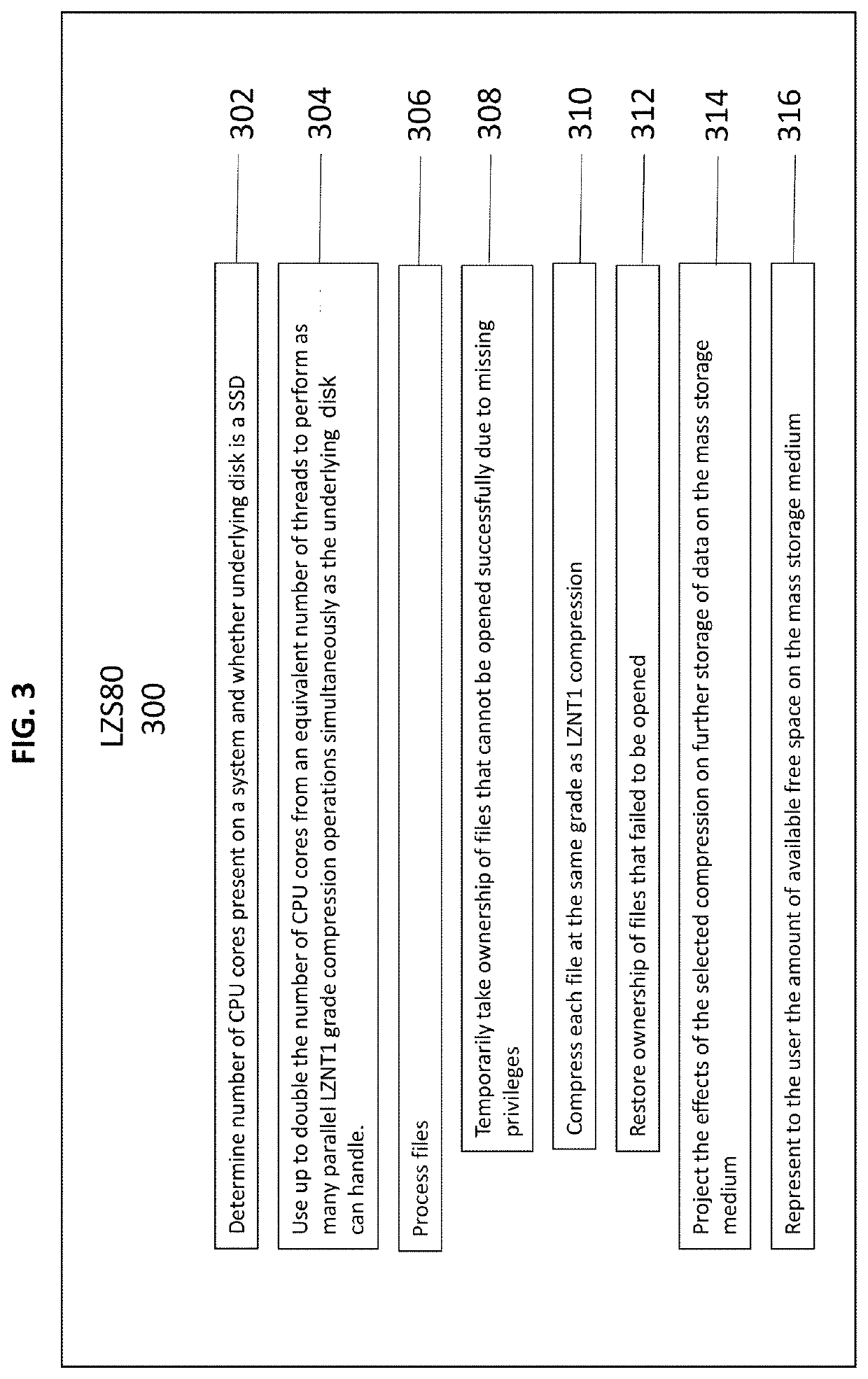Computer system and method including selectively compressing data files and directories based on an operator indication and representing the amount of available free space
a computer system and operator indication technology, applied in the direction of code conversion, memory addressing/allocation/relocation, instruments, etc., can solve the problems of lznt1's weak compression algorithm, neither windows® command line compact.exe tool, nor windows® gui, and achieve faster, convenient, and efficient results
- Summary
- Abstract
- Description
- Claims
- Application Information
AI Technical Summary
Benefits of technology
Problems solved by technology
Method used
Image
Examples
Embodiment Construction
[0051]II. LZSDC: The Present Invention
[0052]The compression techniques offered by LZSDC are LZS80, LZS85, LZS90, and LZS100. FIG. 1 illustrates an exemplary embodiment of a computer system 100, wherein the systems and methods disclosed herein may be implemented using one or more computer systems. As shown, the computer system 100 can include a central processing unit 102, which can control the operation of the computer system 100. The central processing unit 102 may include any type of microprocessor or central processing unit (CPU)), including programmable general-purpose or special-purpose microprocessors and / or any one of a variety of proprietary or commercially available single or multi-purpose systems. The computer system 100 may also include random access memory 104, which can provide temporary storage for code to be executed by the processor(s) 102 or for data acquired from one or more users, storage devices, and / or databases. The random access memory 104 can include one or m...
PUM
 Login to View More
Login to View More Abstract
Description
Claims
Application Information
 Login to View More
Login to View More - R&D
- Intellectual Property
- Life Sciences
- Materials
- Tech Scout
- Unparalleled Data Quality
- Higher Quality Content
- 60% Fewer Hallucinations
Browse by: Latest US Patents, China's latest patents, Technical Efficacy Thesaurus, Application Domain, Technology Topic, Popular Technical Reports.
© 2025 PatSnap. All rights reserved.Legal|Privacy policy|Modern Slavery Act Transparency Statement|Sitemap|About US| Contact US: help@patsnap.com



